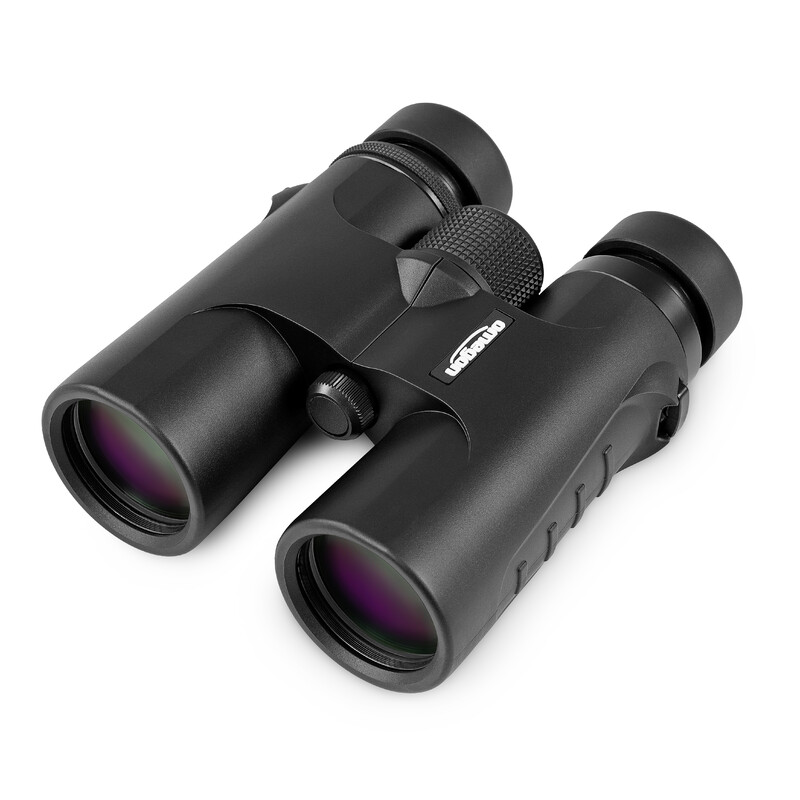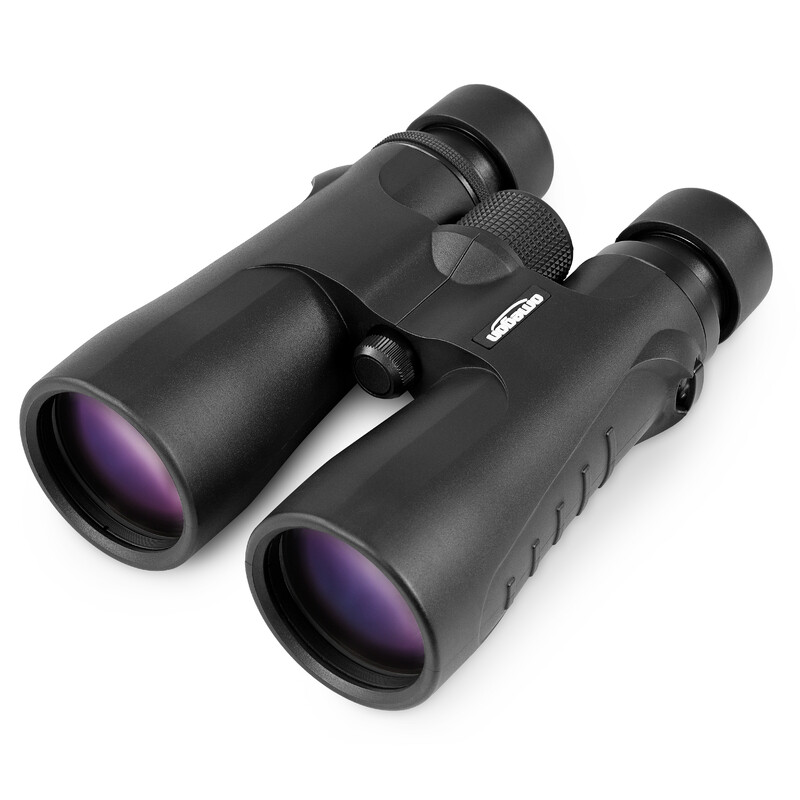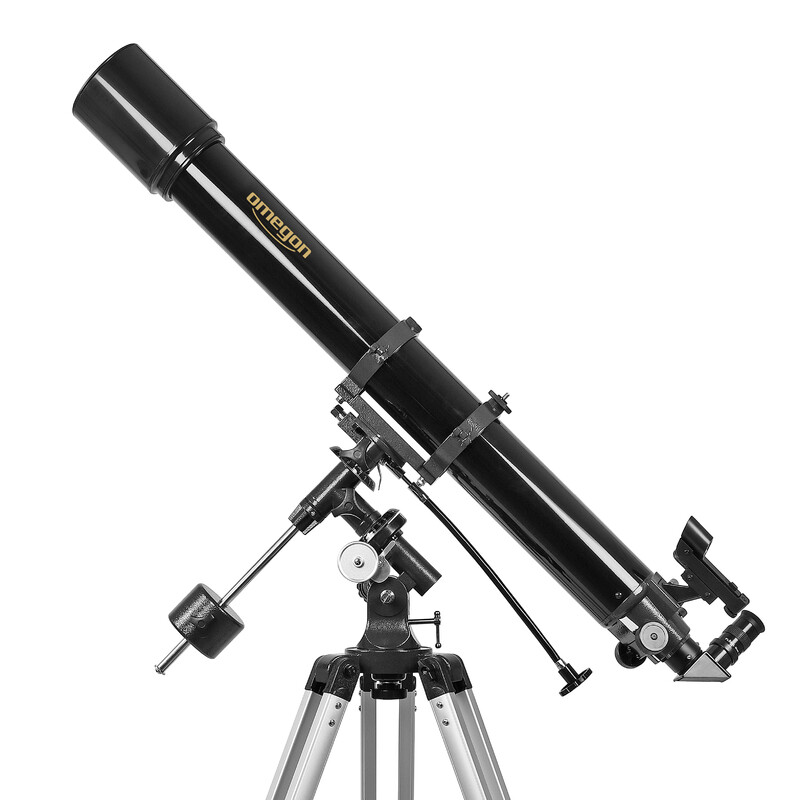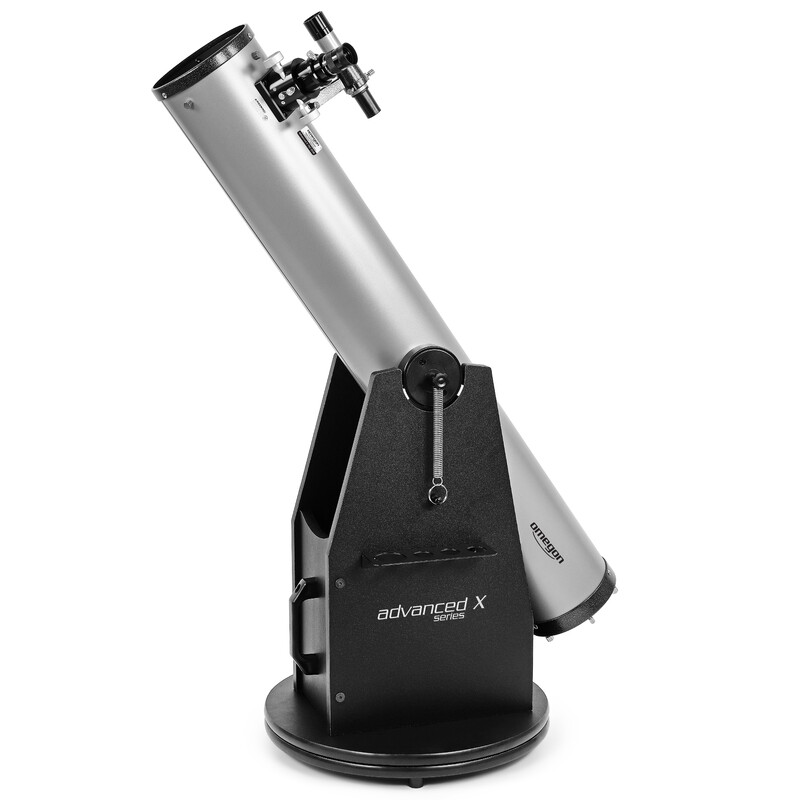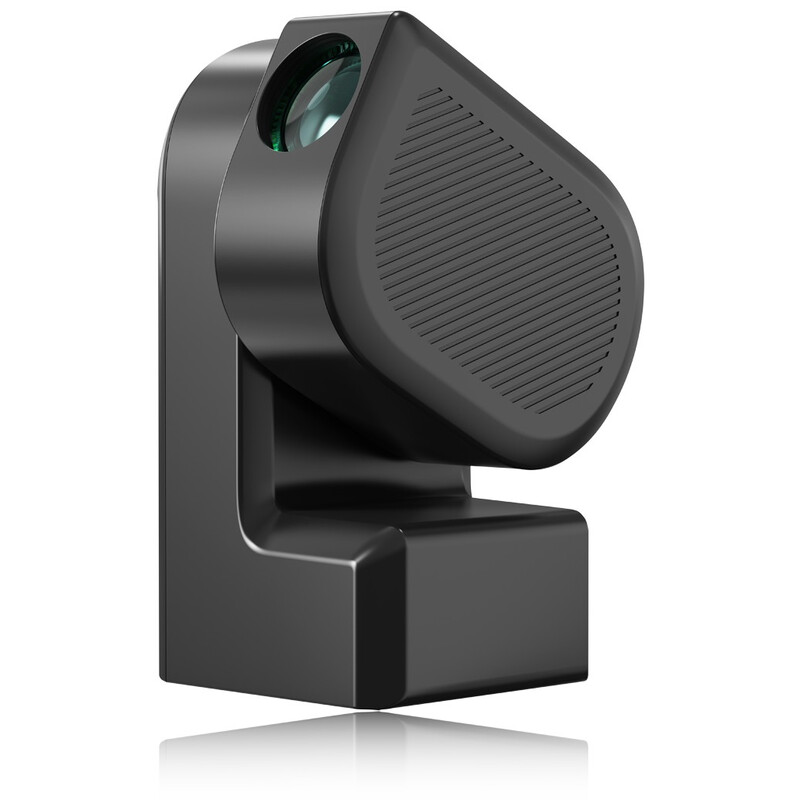The nights are getting longer and the air is often clear: a good time to observe the sky. In autumn 2025, there will be special celestial events. Experience a total lunar eclipse, rare planetary conjunctions, or an occultation of the Pleiades.In the current infographic “Astro Highlights in Autumn 2025,” we have clearly compiled the most beautiful celestial events.Feel free to use the graphic on your website (with a link to www.astroshop.eu) and inform your visitors about the exciting upcoming events.
1.9. Venus meets the star cluster M44
On the morning of September 1, it is worth a look at the eastern sky: Venus is very close to the open star cluster M44, also known as Praesepe or the Beehive. The sight is already recognizable to the naked eye as a faint light spot right next to the prominent Venus. With binoculars, the stars of the cluster become clearly visible.
7.9. Total Lunar Eclipse
On the evening of September 7, a real highlight awaits you: a total lunar eclipse. For Central Europe, the timing is particularly favorable, as the moon rises already eclipsed. This means you will see the moon directly on the eastern horizon in the evening.
Times for Germany:
The eclipse begins even before moonrise, which occurs in Germany around 7:38 PM, depending on the location. At this point, the moon is in the midst of totality and appears noticeably reddish. It reaches maximum darkness around 7:30 PM, and the total phase ends at 8:53 PM.
For an unobstructed view, you should find a spot with a clear view to the east. Binoculars will show the lunar eclipse beautifully, but a telescope with a smartphone adapter is also great equipment for quickly capturing a photo.
8.9. Moon Meets Saturn
On the night of September 8th to 9th, the nearly full moon is near Saturn. Both objects are easy to find in the sky with the naked eye: the bright moon as a distinctive point and Saturn a little further away as a “star” that shines steadily.
This duo can be observed particularly beautifully through binoculars. You can recognize the planet as a small, yellowish disc – its rings appear as a thickening at low magnification. For many, this is a good opportunity to take out the telescope and examine the rings more clearly.
12.9. Moon covers Pleiades
On this night, our satellite covers the Seven Sisters, including all the bright main stars of the star cluster. It begins around 10 PM: The moon approaches from the eastern direction and first covers the star Electra. Then it continues to move – from its bright side – in front of the remaining companion stars. It’s best to observe all of this from an unobstructed location with a good horizon view. In addition to the interesting and quite rare occultation, it is the first harbinger of the winter sky, as the Pleiades officially belong to the constellation Taurus.
19.9. Venus meets Regulus
On the morning of September 19, it’s worth taking a look at the dawn sky. Venus is still the morning star and on this day is very close to the bright star Regulus in the constellation Leo. Nearby, you can also see the delicate crescent moon. Together, they create a beautiful trio in the sky.
If you are an early riser, this is your opportunity to capture the moment with your camera.
21.9. Saturn in Opposition
On September 21, Saturn is in opposition to the Sun. This means: Earth is positioned directly between the Sun and Saturn, and the ringed planet is visible all night long, reaching its greatest brightness. The special feature of the 2025 opposition: The rings are almost seen edge-on, making them hard to see and only about 2 degrees open. Even during twilight, the ringed planet rises above the eastern horizon and follows its apparent arc across the sky until dawn.
23.9. Neptune in Opposition
On September 23, Neptune reaches its opposition and stands favorably in the sky. This distant ice giant can be seen all night and appears in the telescope as a small, bluish disk.
Neptune is about magnitude 7.8, making it invisible to the naked eye. Binoculars show it as a faint point of light, but a telescope is needed for reliable identification. A star chart or app can help locate it in the constellation Aquarius.
2.10. Ceres in Opposition
On October 2, the dwarf planet Ceres reaches its opposition to the Sun. It is visible throughout the night and is particularly close to Earth. Ceres, with a brightness of 7.6 magnitude, can easily be found with binoculars or a small telescope. Ceres moves as an inconspicuous point of light through the constellation Cetus, but it is not visible to the naked eye. However, a simple pair of binoculars separates it from the fainter stars in its vicinity. Those who track its movement from night to night will recognize the typical motion of a planet against the backdrop of fixed stars.
5.10. Moon meets Saturn
On the evening of October 5th, the almost full moon passes by the ringed planet Saturn. Both are high in the sky and easily found with the naked eye. In a telescope, Saturn appears as a yellowish glowing disc. The narrow edge of the rings is only visible with a small aperture. Although the bright moon brightens the sky, it doesn’t matter for observing Saturn.
8.10. Draconids
The Draconids are a rather unknown meteor shower and reach their peak every year at the beginning of October. The name already reveals it: The meteors seem to come from the constellation Draco. This constellation is visible in the sky all night. The number of meteors varies greatly and always brings surprises. Normally, about ten meteors fall per hour, but in 2012, there were suddenly 400. What does that mean? It’s always worth taking a look at the sky, because perhaps a surprise is waiting. However, this year the moon will cause a brighter sky.
14.10. Moon meets Jupiter
In the second half of the night from October 13 to 14, the waning half moon meets the giant planet Jupiter. Both are in the constellation Gemini and are already conspicuous to the naked eye. You will see the moon as a bright half-circle and Jupiter as a shining point of light beside it.
19.10. Moon meets Venus
Early in the morning on October 19, the thin crescent moon is close to the bright Venus. Both can be seen well in the eastern sky. Together, they create a beautiful photographic motif.
22.10. Orionids
Meteor showers are a beautiful event for any enthusiastic stargazer, and the Orionids are no exception. Peaking from October 21 to 22, they promise about 25 to 30 meteors per hour. However, the number of shooting stars can vary from year to year. To catch the best view, set your alarm and look outside in the early morning hours. A must for all shooting star lovers.
2.11. Moon meets Saturn
On the evening of November 2, the Moon is near the planet Saturn. Both shine in the southeastern horizon already at dusk. The Moon is a prominent point of orientation, and Saturn is slightly to the west of it.
November: Saturn in Edge Position
In November 2025, Saturn’s rings will still be in edge position as seen from Earth. They will appear so narrow that they are hardly visible. This is a unique opportunity to observe Saturn without its ring system, even though the sight will be very unusual. Additionally, there will be two Titan transits in November. On November 6 and November 22, the moon Titan will pass across the gas giant.
9.11. Moon Meets Jupiter
On the night of November 9 to 10, the Moon moves past the planet Jupiter. The Moon appears as a large bright spot, and Jupiter looks like a very bright star.
A pair of binoculars or a telescope reveals even more details. On Jupiter, you can see two dark bands of clouds. Next to it are its four largest moons, arranged as small bright spots evenly spaced. The Moon also shows many craters, which are particularly visible along the terminator.
17.11. Leonid Meteor Shower
On the night of November 16 to 17, the Leonids reach their maximum, offering an impressive celestial event with up to 20 meteors per hour. This celestial event is a must for meteor fans.
The Leonids get their name from the constellation Leo, from which they appear to originate. The origin of this meteor shower lies in the comet Tempel-Tuttle, whose particles cause the meteor showers annually. Particularly noteworthy: every 33 years, the meteor stream condenses into a real meteor shower, producing far more than 20 meteors per hour – sometimes even up to several hundred per hour.
21.11. Uranus in Opposition
Uranus reaches its opposition. It shines with a brightness of 5.6 mag. Theoretically, you can see Uranus with the naked eye. In practice, however, it is better to use binoculars or a telescope. This way, you can clearly identify it.
To find Uranus, it is best to use a star map. Through a telescope, Uranus appears as a small, clear disc. It has a slightly greenish color.
25.11. Venus meets Mercury
On the morning of November 25th, Venus and Mercury will be close together at the southeast horizon. Both planets will be visible shortly before sunrise. Venus shines much brighter and thus helps with orientation. The observation is not easy, as it takes place very close to the horizon during dawn.






